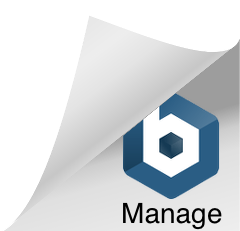The world is changing. Motivations and meaningful aspirations have shifted to the forefront of priority when finding and selecting professions. Information is more readily available today and people have the ability to be connected more frequently, across large distances, and through cultural barriers that previously isolated us. As a result, the composition of teams within organizations (as well as the organizations themselves) must adapt with it to accommodate the new and emerging environment.
Transcending from the generations of hierarchical decision making and authority, next-gen teams are phenomenally “flatter”. They are evolving as more empowered, efficient and agile than their predecessors. Armed with their own skill-sets, empathy, and decision making capabilities this next-gen team functions with only a bit of initial calibration, and thrive when managed with a hands-off approach.
Taking a leaf from Holacracy, Teal Organizations and our own experiences, we’ve come up with the following 5 directives to build a team comprised of leaders.
1. Drop the hierarchy: Structured leadership, authority, and decision making capabilities are no longer held by a supreme central role, but independently between team “peers”. Similarly, rigid position descriptions, responsibilities and specific tasks are being replaced by “roles”. From these roles, each member of the group is equally empowered, authorized and expected to fill their designated roles autonomously, which reduces the need for hierarchy.
2. Focus on Soft Skills, Not Hard: Roles are much harder to fill than tasks, because roles require effective use of interpersonal skills. These soft skills – empathy, understanding, sincerity, generosity, etc. provide the groundwork for team compatibility and cohesion. Selecting team members with complimentary dispositions, and capabilities will help promote the productivity, effectiveness and efficiency of the individual and team. To do this, focus on selection interviews and processes to ensure they are clearly inclusive of more effective elements of human talents and strengths.
3. Establish transparent guidelines, structure, and performance results: Guidelines are created through collaborative involvement, where the end product is a set of flexible guidelines to which everyone can agree, work, and thrive. Transparent guidelines help set the stage for autonomous performance by necessitating ubiquitous understanding, individual buy-in, key deliverables/approaches and strategic intent for the project. Once established, team members take ownership of their role, and help encourage team members to meet guidelines & targets.
4. Distribute resources, responsibility, and accountability: Once ground rules have been set and agreed-upon, the resources, responsibility, and accountability to fulfill the role should be given to the team members. This enables decisions to be made locally, which makes the team substantially more agile and adaptable to changing business environments. This also increases individual productivity by reducing bureaucratic delays while empowering team members to make their own decisions, and equally respond to the (positive or negative) consequences.
5. Promote Autonomy: This team of leaders requires little encouragement to kickoff projects, and once launched, they’ll require (and prefer) minimal interference. Each team member will have a clear understanding of their roles & requirements, and will each work independently to contribute to the overall team performance standards all the while exerting many of their soft skills (empathy, understanding, encouragement, etc) to help empower their team members to excel in their respective roles. As with the Ritz Carlton, team members autonomously make decisions on behalf of the customers they serve, to more efficiently add value to customers, while also empowering team members to take ownership of their roles.
What is the outcome? A self-governing team of key contributors focused, and empowered and capable to complete their roles independently. This team compels itself to reach ever higher standards and capabilities, and is not only flexible by necessity, but by nature. This team that has the capability to not only withstand the dynamic industry and organizational changes facing businesses in the coming decades, but to reconfigure value within its organization.
For more strategies on building teams of leaders, contact us for ideas tailored to your challenges.

